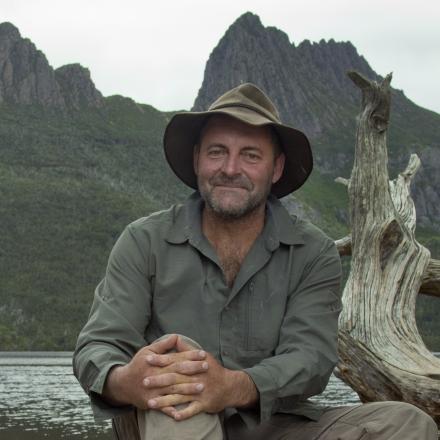
Professor Simon Haberle (Australian National University)
Reconstructing vegetation cover and long-term environmental change in Sunda and Sahul
Abstract
Reconstructing past vegetation cover through the study of microscopic plant remains preserved in sedimentary environments – otherwise known as palaeoecology – provides an important window into the nature, pace and direction of environmental change through time. Existing lines of evidence point to significant changes to biodiversity, vegetation cover, and fire frequency since the arrival of Homo sapiens into Sunda (island SE Asia) and Sahul (Australia-New Guinea) sometime around 65,000 years ago. In this paper I show how detailed reconstructions of past landscapes can be derived from pollen and charcoal preserved in sedimentary records and present a review of the nature of the past environments during the span of time from when H. sapiens first encountered this landscape through to the managed and human influenced landscapes described at European contact. The new Australian Research Council Centre of Excellence in Biodiversity and Heritage in Australia aims to build our capacity in interdisciplinary studies by combining archaeological and palaeo-environmental to allow an assessment of how people adapted to changing conditions and in turn may have driven these changes.
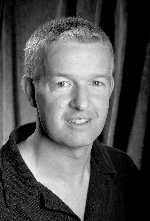
Professor Chris Ballard (Australian National University)
History and language transformation in Oceania
Abstract
What can the study of history bring to the reconstruction of language transformation? While historical linguistics has forged powerful collaborations with anthropology, archaeology and genetics, the relationship with history is much less developed. A series of vignettes from New Guinea and Vanuatu illustrates some of the potential of both oral traditions and documentary history in recasting questions about the evolution of contemporary language diversity in Melanesia: on the migration of the ancestors of the Agarabi-speakers and their adoption of Gadsup language in Papua New Guinea’s Eastern Highlands; on the complex layering of Melanesian and Polynesian languages in Central Vanuatu; and the distinctive diffusion after 1871 of tools, crops and terms introduced by Russian anthropologist Nikolai Miklouho-Maclay to the Madang coast.
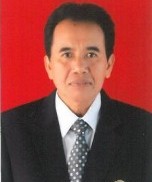
Professor Ketut Artawa (Udayana University)
Adjectives of emotion and their corresponding derived verbs: A typological perspective
Abstract
Adjectives can be found in every language, however, the types and sizes of adjective each language has could be different from one another. In a great majority of languages, adjectives are semantically used to state a property and specify the referent of a noun ( Dixon, 2010: 91). This paper will account for the interaction between syntax and semantics of adjectives of emotion and their corresponding derived verbs in Indonesian. The analysis makes use of a number of syntactic tests comparing the syntactic properties of the adjectives of emotion with their corresponding derived verbs. The syntactic tests include the various functions that the adjectives of emotion and corresponding derived verbs can fulfill in the clause structure, their ability to take a modifying element, their syntactic properties in a comparative construction, and their ability to be combined with human noun and non-human noun as a grammatical subject of the clause. The result of the analysis showed that both the adjectives of emotion and their corresponding verbs can fulfil similar functions; however, the functions of derived verbs are more restricted. This may relate to the notion of markedness. As derived verbs, they still showed the syntactic features of their base forms in that they can take modifying elements. The interesting and important syntactic feature of the adjectives of emotion and their derive verbs is that when functioning as a head predicate, the subject of the base adjective is semantically an EXPERIENCER and human, while for the verb form, the subject is semantically a STIMULUS and thing, it may also occur with a human subject, but it is less common.
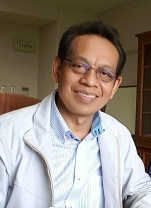
Associate Professor I Wayan Arka (Australian National University)
On the competition dynamics and eco-linguistic equilibrium of minority languages: case studies from Indonesia
Abstract
I discuss different variables involved in the competition dynamics of eco-linguistic equilibrium affecting the wellbeing of minority languages, based on my documentation research on minority Austronesian and Papuan languages of Indonesia. Extending the notion of ecological equilibrium to include language as part of larger co-existence and mutual interactions of humans with their natural-biological, social-cultural-symbolic, and cognitive ecologies (Haugen 1972, Næss 2008, Chen 2016, among others), I argue for the significance of symbolic social-cognitive variable for a healthy eco-linguistic equilibrium of a minority language. There is good empirical evidence from Loloan Malay (an Austronesian language spoken in western Bali) showing that small population size is not a detriment to the language’s well being in the competition dynamics in multilingual setting, and that high language vitality is tightly associated with the identity-related symbolic status of the language. Nevertheless, in the case of Marori (a highly endangered Papuan languge of Merauke) and Enggano (an Austronesian language on Enggano Island, southwest of Bengkulu), the population size with an increasingly dwindling number of speakers is indeed a critical variable, seriously affecting the equilibrium resulting in rapid language shift. In the full paper, I provide further support for the close connection of language’s well being, distinctive identities and the speakers’ dynamic ecology, and also discuss language advocacy, literacy resources and other strategies mitigating the negative effect of the competition dynamics of languages in contemporary Indonesia.
References
Chen, Sibo. 2016. “Language and ecology: A content analysis of ecolinguistics as an emerging research field.” Ampersand no. 3:108-116.
Haugen, E. 1972. The Ecology of Language. Redwood City, CA: Stanford University Press.
Næss, A. 2008. “Ecology of Wisdom: Writings by Arne Næss.” In, edited by A.R. Drengson and B. Devall. Counterpoint, Berkeley, CA.

